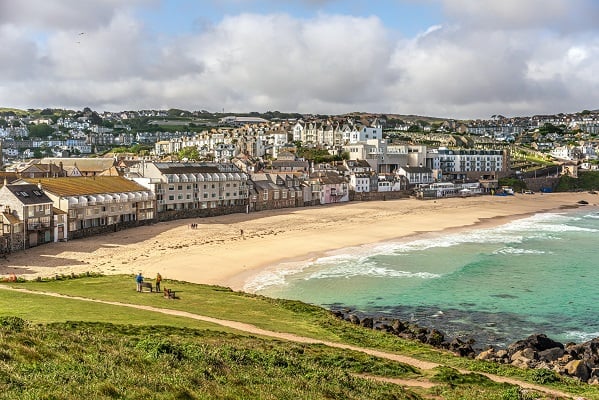Market analysis of government data from eXp UK, the platform for personal estate agents, has shown that, after adjusting for inflation, just three areas of the UK property market have seen house prices increase since interest rates started to rise in December 2021, with the average UK house price down -9.4% in this time.
However, while house prices have been affected pretty much across the board by difficult market conditions, more affordable regions like Scotland have been less impacted compared to pricier regions like London.
eXp UK analysed the latest data from the Gov UK House Price Index (May 2023 – latest available), adjusting historic data in line with inflation, to see just how the market is actually performing since the Bank of England started to increase interest rates back in December 2021.
In Scotland (-7.6%) prices have held steady the most, followed by the East Midlands (-7.9%), and the North East (-8.0%).
These three regions are all relatively affordable, as Scotland’s prices stand at £193,000, East Midlands’ at £247,000, and the North East’s at £158,779.
The region that’s seen the biggest drop is London (-12.3%), with house prices that average at around £526,000, followed by the East of England (-11.3%), at £346,000.
Debunking the trend
Some areas have actually seen house price gains, to buck the overall trend.
When analysing the property market at local authority level, the research by eXp UK shows that house prices in the City of London rose by 4.7% over the period to reach £988,000, while there was also a price increase of 3.2% in West Lancashire to £239,000, as well as an uplift of 2.1% in Melton to £313,000.
Other regions like London’s Tower Hamlets, Monmouthshire in Wales and St Helens, Merseyside, saw only minor price falls of -1.1%, -1.4% and -1.8% respectively.
Worst hit areas
The capital is the most and least affected depending on where you look and despite the relative positivity found in the City of London and Tower Hamlets, London local authorities account for six in 10 of the worst affected areas across the UK.
The City of Westminster has seen a dramatic house price fall of -25.5%, worse than any other local authority, as house prices started from a high base of £1.24 million before falling back to £921,000.
Similarly, the prime area of Kensington and Chelsea saw price falls of -20.9%, from £1.66 million to £1.31 million, while Islington experienced a reduction of -18.7%, from £849,000 to £690,000.
Three areas in Scotland have also been badly affected, with the City of Aberdeen seeing an -18.4% fall, Angus a -16.8% reduction, and North Ayrshire a -15.9% fall.
As a result, prices in North Ayrshire average at just £124,000, while they stand at £163,000 in Angus and around £140,000 in Aberdeen, proving that cheaper areas aren’t always shielded from house price decline.
Head of eXp UK, Adam Day said, “It’s been a difficult period for investors and homeowners, as rapid interest rate rises have stifled a market which previously experienced unprecedented house price growth.
“But the research highlights that it’s not the same everywhere, as more expensive areas generally seem to have suffered more.
“Scotland has been the least affected region on average, with areas like East Lothian barely seeing any decline at all.
“London is the most affected area, while looking closer certain prime areas like Westminster have been hit extremely hard.
“Supply and demand is key, so if you’re a buyer you should check out the availability of properties in your region to ascertain whether there’s value to be had. If there’s ample supply there may be an opportunity to haggle on price.”






Leave a Comment